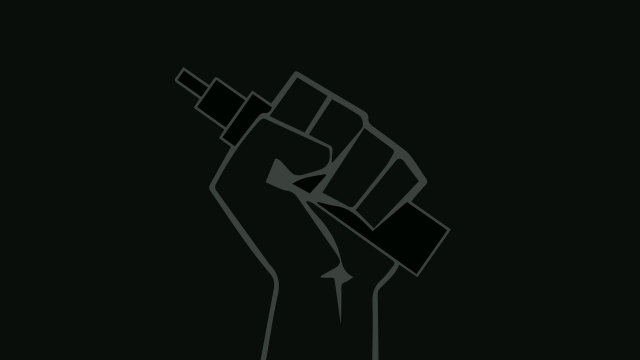Have you ever received a doctor’s note and found yourself struggling to make sense of the scribbles and abbreviations? You’re not alone. Doctors’ notes, with their intricate jumble of medical terminology and shorthand, can often feel like decoding a secret language. But fear not, as we embark on a journey to demystify these enigmatic documents, we’ll uncover the meanings behind the scribbles and help you understand what your doctor is relaying. So, grab your curious mind and let’s dive into deciphering the intriguing world of doctors’ notes.
Doctors’ notes are an essential element of medical care and play a vital role in documenting patient visits, diagnoses, treatments, and recommendations. These carefully crafted records serve as a communication tool between healthcare providers and also act as a reference for future encounters. However, understanding doctors’ notes requires a basic understanding of the medical language and the abbreviations commonly used. Throughout this article, we will simplify this complex language and provide you with useful tips to unravel the messages hidden within doctors’ notes.
So, join us on this enlightening journey as we unveil the mysteries of doctors’ notes. Whether you’ve struggled to decipher your own notes or simply find the subject fascinating, by the end of this article, you’ll be armed with the knowledge to better understand these cryptic documents. So, let’s embark on this adventure together, understanding the language of doctors’ notes one word at a time.
Understanding the Purpose of Doctors’ Notes
Doctors’ notes serve a crucial role in healthcare, acting as a means of communication between healthcare professionals and providing important information about a patient’s condition. These notes are a vital part of the medical documentation process, documenting diagnoses, treatment plans, and progress updates for the benefit of both healthcare providers and patients.
The primary purpose of doctors’ notes is to ensure continuity of care. When a patient visits multiple healthcare professionals or undergoes different medical procedures, the notes provide a comprehensive overview of their medical history. This allows doctors to make informed decisions based on the patient’s previous diagnoses, treatment outcomes, and prescribed medications.
Another important function of doctors’ notes is to serve as a legal record. These notes document the healthcare provided to a patient, ensuring accountability for the medical professionals involved. In case of any legal disputes or insurance claims, doctors’ notes play a crucial role in substantiating the medical intervention provided.
Additionally, doctors’ notes facilitate effective communication between different healthcare professionals involved in a patient’s care. These notes serve as a means of transferring information, ensuring that all healthcare providers are aware of important details regarding the patient’s condition, ongoing treatments, and any necessary follow-up care.
In conclusion, doctors’ notes play a vital role in healthcare by providing a comprehensive record of a patient’s medical history, facilitating effective communication between healthcare providers, and serving as legal documentation. Understanding the purpose of these notes is essential for maintaining continuity of care and ensuring the best possible outcomes for patients.
Interpreting the Medical Terminology
Medical terminology can often seem like a confusing web of complex words and abbreviations. But when it comes to decoding doctors’ notes, understanding these terms is essential. Here, we’ll unravel some of the mysteries behind the medical terminology commonly used in doctors’ notes.
Key Abbreviations: Doctors often use abbreviations to save time and space when documenting patient care. It’s important to familiarize yourself with these abbreviations, as they can provide valuable insight into a patient’s condition. For example, ‘BP’ stands for blood pressure, ‘HR’ refers to heart rate, and ‘Rx’ indicates a prescribed medication. By recognizing these abbreviations, you can gain a clearer understanding of a doctor’s notes.
Diagnostic Terminology: When explaining a patient’s diagnosis, doctors may use specific medical terms. Understanding these terms can help you better comprehend a patient’s condition. For instance, ‘osteoporosis’ describes a condition characterized by weak bones, while ‘pneumonia’ refers to an infection of the lungs. By deciphering these diagnostic terms, you can uncover key information about a patient’s medical status.
Procedure and Treatment Terminology: Doctors’ notes often include information about any procedures or treatments performed. It’s crucial to comprehend the terminology used in these descriptions. For example, ‘arthroscopy’ denotes a minimally invasive surgical procedure used to examine and repair joints, while ‘chemotherapy’ refers to the medical treatment of cancer using drugs. By understanding these terms, you can grasp the specific procedures or treatments utilized for a patient’s care.
Doctor Note For Work Template
By delving into the medical terminology present in doctors’ notes, we can decode the detailed information contained within. Familiarizing ourselves with key abbreviations, diagnostic terms, and procedure/treatment terminology allows for a more comprehensive understanding of a patient’s medical history and ongoing care.
Challenges in Deciphering Doctors’ Handwriting
The legibility of doctors’ handwriting has long been a subject of contention and frustration within the medical community. Trying to decode doctors’ notes can be a daunting task for pharmacists, nurses, and even patients themselves. The following are some of the challenges involved in deciphering doctors’ handwriting.
Firstly, the use of abbreviations and medical jargon in doctors’ notes adds an additional layer of complexity. These abbreviations are often unique to the medical field and can be confusing for those outside of it. Trying to match these shorthand abbreviations to their corresponding medical terms requires a certain level of familiarity and knowledge.
Furthermore, the hurried nature of doctors’ work can contribute to the illegibility of their handwriting. With a heavy workload and limited time, doctors often find themselves rushing to document important information. This rush can result in sloppy penmanship and unclear annotations, further complicating the task of deciphering their handwritten notes.
Lastly, doctors’ handwriting itself can vary greatly from person to person. Each individual has their own unique writing style, making it difficult to establish a universal key for deciphering doctors’ notes. What one person may find easy to read, another may struggle with, leading to potential misunderstandings or errors.
In conclusion, deciphering doctors’ handwriting presents numerous challenges due to the use of medical abbreviations, the hurried nature of doctors’ work, and the individual variations in their handwriting styles. Overcoming these challenges is crucial to ensuring accurate and efficient communication within the healthcare system.


